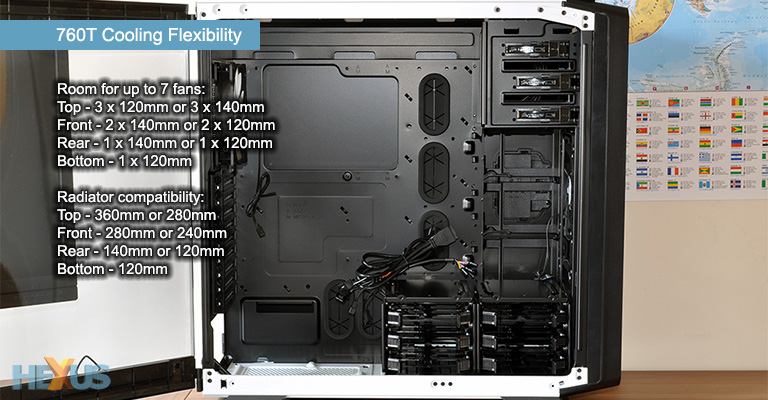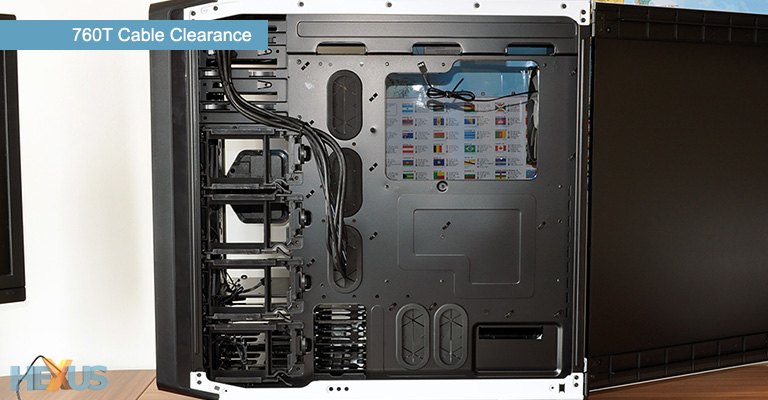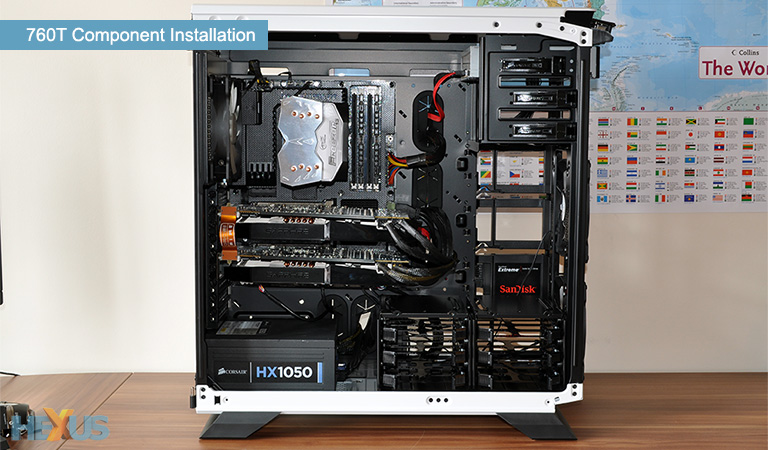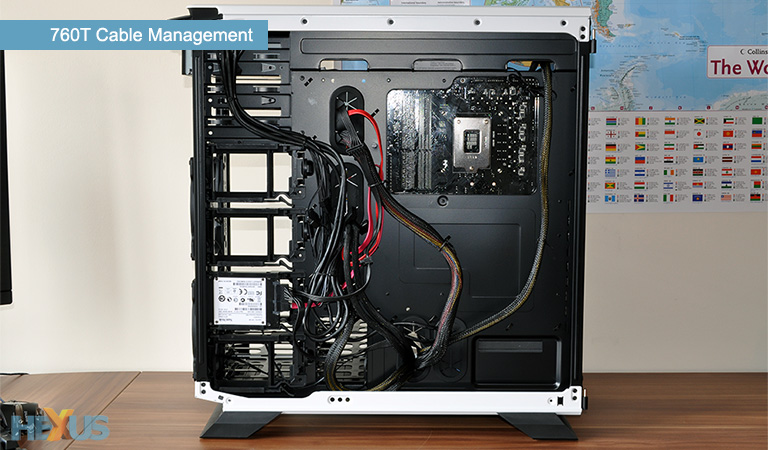Inside the Graphite Series 760T
One of the most satisfying things about the 760T is that it's oh so easy to work with. Tools are rarely a requirement, and right from the get-go you can gain full access via the swing-out side panels.
The doors can be highly convenient, though they should be approached with a bit of caution, too. The sheer size of the panels is such that you need a good amount of space in order to open them fully, and there isn't a great deal of clearance between the bottom of the panel and the floor. We had to keep moving peripherals on our desk to ensure the door wouldn't strike our keyboard when opened.
When inside, the 760T feels extremely roomy throughout and there's a massive amount of space for enthusiasts to play with. And it's important to keep the target audience in mind. For most builders, the 760T is a case of overkill, and perhaps it's due to the recent rise of small-form-factor machines, but for whatever reason, we found it strange trying to accommodate the enclosure in our office. The usefulness of the door is lost when underneath a desk, and on top it just takes up too much space.
There are size considerations that enthusiasts need to consider, however the 760T's considerable footprint may be deemed a small price to pay for the voluminous interior. Straight away, it is clear that airflow permutations are plentiful. Corsair's out-the-box fan configuration provides two 140mm front intakes with white LEDs and a rear 140mm exhaust, and there's plenty of scope beyond that.
Seven fan mounts are available in total, and as you might imagine, that means radiator mounting opportunities galore. You could install a 360mm radiator up top and a 280mm radiator up front, and with three inches of space above the motherboard tray, it shouldn't be too difficult to deploy internal push/pull configurations.
Cable management is equally well catered for, with five good-sized and rubber-grommeted holes spread throughout the motherboard tray, as well as three up-and-over holes at the top. Tie-down points are also in good supply and there's roughly an inch of space behind the tray for excess cables. It is easy to hide cable clutter around back, and with a swing-out side panel, closing the cover is never a problem.
Elsewhere, we can see that Corsair isn't yet taking the axe to traditional storage solutions. Whereas other chassis are beginning to drop support for optical drives and 3.5in hard disks, the 760T continues to cover all bases. Three 5.25in bays are at the top of the storage stack and the uppermost bay includes a stealth cover to keep an optical drive hidden behind a plastic flap.
Half-a-dozen 3.5/2.5in hard disk bays are spread across two modular cages that by default are installed in the base of the enclosure. These can be removed or relocated by undoing a set of screws underneath the chassis, and Corsair will be selling cages as standalone accessories for users who need to install a greater number of hard disks.
Choose to go the SSD route and you can free-up internal space by ditching the HDD cages entirely, leaving four rear-mounted plastic 2.5in trays. Each one is removable, making it easy to install your drive, and we like the fact that they can be seen from the front - a quartet of high-end SSDs would be well worth showing off.
Tool-free storage trays help ease the build process, and there aren't really any stumbling blocks to speak of. Nine thumb-screwed expansion slots allow for multiple graphics cards, GPU clearance isn't an issue, there's a huge amount of space for liquid-cooling paraphernalia, and we suppose the only valid question mark is this: do you have enough kit to take full advantage of the chassis' capabilities? Our dual-graphics Intel Z77 test platform can usually be deemed high-end, yet it is made to look insignificant inside the belly of the 760T.
There are some excellent features on offer here, but the new Graphite is facing some stern competition, even from within Corsair's own ranks. At launch, the 760T will be slightly more expensive than the full-tower Obsidian Series 750D, and if you look closely enough, you will see a striking resemblance between the underlying frames.
Both chassis share a similar feature set but are dressed differently, with the 760T taking a flashy approach and the 750D opting for a more subdued look. The similarities beneath the skin suggest that performance should be close to identical, so let's get on to the benchmarks and see how the 760T stacks up against its Obsidian Series sibling.













